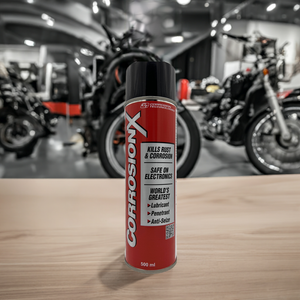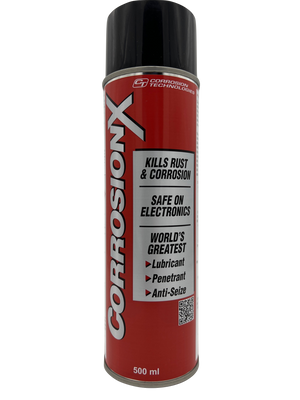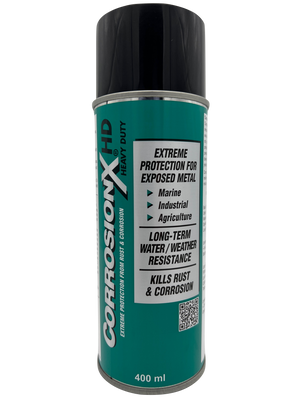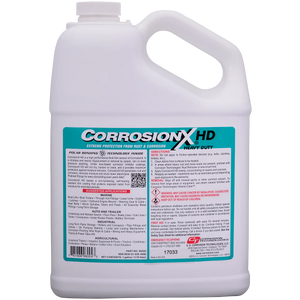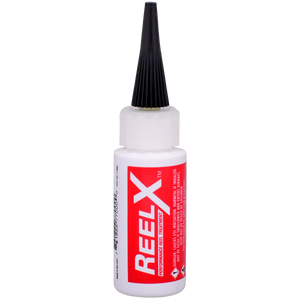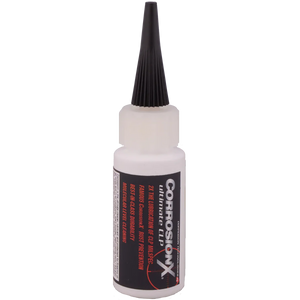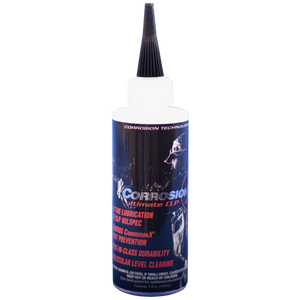The Role of Lubrication: Why It Matters More Than You Think
Friction: The Hidden Culprit
Friction is like the friend who always tags along but never pays for anything. Sure, friction is crucial in certain scenarios—like making sure your car tires grip the road—but it’s a big villain inside your machinery. When two surfaces rub together, they generate friction. This friction, if unchecked, produces heat, causes wear and tear, and leads to premature damage.
Imagine rubbing two sticks together to start a campfire. You can generate enough heat to spark a flame. Inside your equipment, friction does the same thing, minus the intentional pursuit of fire. It overheats and damages parts, leading to breakdowns that no one wants. Without the right lubrication, the surfaces in your machinery keep scraping and bumping against each other, gradually grinding down and ultimately failing.
Heat Dissipation: Keeping Things Chill
Alongside friction, excess heat is another major threat to machinery. When your engine roars or your factory machines spin at incredible speeds, heat builds up in the metal parts faster than you might expect. That’s where lubrication swoops in like a dedicated cooling system. Certain lubricants—especially oils—act like a mini-transport system for heat, carrying away warmth from critical parts and preventing your machinery from overheating.
Just picture yourself exercising on a hot summer day. You sweat to cool your body down and prevent heatstroke. Well, oils and greases are like the “sweat” of your machinery. They’re there to keep everything from getting too hot, ensuring your machine’s “body temperature” stays in a safe zone. Without that cooling effect, your equipment’s performance could plummet, or worse, suffer permanent damage.
Corrosion Defense: Battling the Rust
Rust is the sort of enemy that creeps up silently and takes over when you’re not paying attention. It’s driven by moisture, oxygen, and other environmental elements. You might notice a small orange patch on a metal surface one day, and before you know it, the rust spreads and weakens the entire component. Luckily, many lubricants are armed with corrosion inhibitors that stand guard against this silent invasion.
Think of it like wearing a raincoat during a heavy downpour. Sure, you might still get a bit damp, but most of the water slides right off. A high-quality lubricant forms that protective coat, fighting off the moisture and oxygen that lead to corrosion. In harsh environments, especially those with high humidity or salty sea air, using lubricants that feature anti-corrosion properties is a must if you want to keep rust at bay.
Exploring the Lubricant Universe: Oils, Greases, and Dry Lubes
There’s no single “magic” lubricant that works for every scenario. Instead, there’s a universe of options, each with its own strengths and weaknesses. Understanding the differences between oils, greases, and dry lubes is a lot like knowing whether you should wear sneakers, boots, or flip-flops to a particular event. It’s all about matching the characteristics of the lubricant to the environment and the job at hand.
Oils: The Most Common Go-Getter
Oils are arguably the most familiar and widely used lubricants. From your car engine to your bicycle chain, oil is practically everywhere—and for good reason. Oils reduce friction, help disperse heat, and often include additives that protect against corrosion. They come in different viscosities (thickness levels), so you can choose the one that’s best for your particular piece of equipment.
Mineral Oils
Mineral oils are derived from petroleum and tend to be the budget-friendly choice. Despite their cost-effectiveness, they’re a solid go-to for many general-purpose applications. They can handle light to moderate loads, making them perfect for household tasks like lubricating hinges, simple bearings, and small machinery. Think of mineral oil as a casual sneaker: it’s the everyday footwear you can slip on for a quick walk without overthinking it.
Synthetic Oils
On the other end of the spectrum, synthetic oils are like the deluxe sneakers you break out for a special marathon or intense workout session. These lubricants are engineered in laboratories to provide top-notch performance under extreme conditions. They can handle scorching hot engines and frigid cold climates without breaking down as quickly as mineral oils. Although pricier, they offer longer-lasting performance, resist oxidation, and maintain consistent viscosity in a broader temperature range.
Penetrating Oils
Ever tried to unscrew a rusted bolt and almost snapped your wrench in half? That’s where penetrating oils come into play. These specialized oils are formulated to seep into tight spaces, loosening up rust and corrosion. They’re your best friend when you’re dealing with stuck bolts, hinges, or any corroded part that needs some “persuasion” to move freely again. Penetrating oils typically have a low viscosity, letting them snake through microscopic gaps and break down rust from the inside.
Greases: The Durable and Tenacious Protectors
Grease is essentially oil that’s been thickened with a soap or another thickening agent. It’s a bit like turning liquid oil into a buttery spread. This transformation creates a more substantial lubricant that stays where you put it, providing long-lasting protection. Because grease won’t drip or run off as easily as oil, it’s perfect for areas where relubrication is difficult or where the lubricant needs to cling stubbornly to moving parts.
Lithium Greases
If general-purpose oils are the comfy sneakers, then lithium greases are your everyday boots. They handle a wide range of tasks, repel water reasonably well, and operate effectively in moderate to high loads. Lithium grease is a staple for many automotive and industrial applications, offering that robust, all-around performance needed to keep parts functioning smoothly.
High-Temperature Greases
Some environments get so hot they could practically bake cookies. In those scorching conditions, standard grease might melt or break down, leaving your parts vulnerable. High-temperature greases contain specialized additives to withstand extreme heat without losing effectiveness. They’re like industrial-grade oven mitts, ensuring that your machinery’s moving components remain well-lubricated, even in the blistering heat of a furnace or a high-powered engine.
Marine Greases
Marine environments can be brutally corrosive, thanks to the salt content in seawater and the constant humidity. Marine greases are formulated to resist water washout and guard against rust. They act like an impenetrable water-repelling shield, ensuring your boat’s parts remain functional and rust-free. Whether you’re dealing with a fishing vessel or a recreational boat, using a grease designed for marine environments is crucial if you want to avoid pitting, corrosion, and frequent breakdowns.
Dry Lubricants: The Clean and Precise Option
Dry lubricants are the minimalist’s dream—they don’t leave behind the oily residues or sticky films that attract dust and debris. Instead, these lubes are made from substances like graphite or Teflon (PTFE). Think of them as stealthy ninjas: they slip between surfaces to reduce friction without leaving a noticeable mess behind. Because of their cleanliness, they’re commonly used in environments where contaminating products with grease or oil would be problematic.
Teflon (PTFE) Lubes
PTFE-based dry lubricants excel in applications requiring extremely low friction and resistance to chemicals. Whether it’s precision instrumentation in medical equipment or the delicate hinges of a high-tech device, Teflon lubes can handle it. They stand up to high temperatures, harsh chemicals, and constant motion, making them a go-to choice for demanding industrial scenarios.
Graphite Lubes
Graphite lubricants might remind you of pencil lead, but don’t underestimate their capabilities. Graphite excels in high-temperature settings, providing lubrication even when oils and greases would simply burn off. You’ll often find it in the glass industry, metal forging processes, and other settings where surfaces routinely reach temperatures that would scare most other lubricants away.
Tips on Selecting the Perfect Lubricant
Just as you wouldn’t wear a heavy coat on a scorching beach day or flip-flops in a snowstorm, it’s important to choose the right lubricant for each situation. Identifying the specific conditions and tasks at hand ensures your equipment gets the best possible care. Here are the main considerations to keep in mind.
Match the Environment
Location, location, location—it’s not just a cliché in real estate; it matters in lubrication, too. Different environments demand different lubricant properties. Is your environment super dusty, extremely humid, or prone to high levels of salt in the air? Maybe you’re working in a place with wide temperature swings, or you’re consistently dealing with harsh chemicals. Each factor influences the type of lubricant that’ll keep your gears turning smoothly.
- Marine Conditions: Environments near saltwater require products specifically designed for corrosion protection. Marine greases have extra water-resistant properties and corrosion inhibitors.
- Extreme Heat: High-temperature settings—like furnaces, smelting operations, or heavy engines—need lubricants formulated to remain stable at elevated temperatures.
- Dusty or Dirty Environments: Dry lubricants might be a better option here because they won’t attract dust and grime the way oily or greasy substances would.
Consider the Machinery or Application
Not all machinery is created equal. A delicate clock requires a vastly different lubricant from a heavy-duty piece of construction equipment. This distinction comes down to load, speed, tolerance, and the potential for contamination or damage.
- High Load, Low Speed: Think of heavy machinery, construction vehicles, and industrial presses. Greases with high viscosity work well here because they provide a thicker film capable of handling intense pressure.
- High Speed, Low Load: High-speed fans, blowers, and some electric motors often need thinner oils that can rapidly flow and cool. Too thick a lubricant can create drag and reduce efficiency.
- Precision Instruments: Cameras, medical devices, and intricate mechanical assemblies need low-friction lubricants that won’t gum up or cause extra resistance. Light oils or specialized dry lubes often fit this bill.
Frequency and Maintenance
Next up: how often can you (or are you willing to) re-lubricate? If you’re regularly checking and refreshing the lubricant, you might opt for something that’s easier to apply, like an oil. If the machinery is tucked away in a difficult-to-reach nook and cranny, a grease or a long-lasting high-performance lubricant might be more practical.
It’s similar to the difference between watering houseplants daily versus planting drought-tolerant succulents in your garden. Some equipment thrives with frequent maintenance (like your everyday houseplants), while other machinery is fine if left unwatered for longer periods (like succulents). Choose your lubricant accordingly.
Reading the Manual
In our digital, Google-happy age, it can be tempting to skip the manual. But here’s a secret: the manual for your machine often contains specific lubricant recommendations. These guidelines are based on real-world testing done by the manufacturer. If there’s a recommended oil viscosity or a particular brand of grease, it’s generally in your best interest to follow it—especially if your warranty depends on it.
Reading the manual might not be the most exciting part of your day, but consider it like consulting a recipe before baking a cake. Sure, you can experiment, but ignoring all the recommended ingredients can lead to disappointing (or even disastrous) results.
Lubrication Best Practices: How to Apply and Maintain
Even if you’ve selected the perfect lubricant for your situation, your job isn’t over yet. Proper application and maintenance ensure that your chosen product performs at peak levels. Neglecting to apply lubricants correctly or forgetting to set up a maintenance schedule is like buying the best paint but slathering it on your walls haphazardly—you won’t get the result you’re hoping for.
Start with a Clean Slate
Before applying any lubricant, clean the surfaces meticulously. Think of it as prepping a wall before painting; if you skip cleaning and smoothing, the final result won’t last long. Dirt, metal shavings, old lubricant, and grime can mix with fresh lubricant, forming an abrasive paste that accelerates wear and tear. Thoroughly wipe down or flush the components and let them dry before adding new lubricant.
Applying: Less Is Sometimes More
If you’ve ever squeezed out way too much toothpaste onto your toothbrush, you know the feeling of overdoing a good thing. The same applies to lubricants. In many cases, using a massive glob of grease or dousing a part in oil doesn’t improve performance; it can actually cause more issues.
Excess lubricant can attract dirt, become messy, and even seep into areas where you don’t want it. When lubricating bearings or gears, aim for the recommended volume. It’s often best to add small amounts, run the equipment briefly, and then add more only if necessary. That way, you avoid oversaturation.
Re-Lubrication and Schedules
Lubrication is not a “set it and forget it” affair (unless you’re dealing with specialized sealed bearings that are designed for zero maintenance). Most equipment benefits from periodic inspection. The frequency depends on:
- Equipment Usage: Machines that run 24/7 under heavy loads may need more frequent lubrication check-ups.
- Operating Environment: A dusty or wet environment breaks down lubricants faster than a clean, climate-controlled workshop.
- Lubricant Quality: High-grade synthetic oils or greases can last longer under the same conditions compared to lower-quality products.
Setting up a lubrication schedule—whether it’s weekly, monthly, or yearly—can drastically extend the life of your machinery. It also prevents random breakdowns at the worst possible times, like a day before a big project deadline.
CorrosionX: A Standout Solution
If you’re looking for a lubricant that goes above and beyond standard offerings, CorrosionX might just become your new best friend. CorrosionX products are renowned for delivering robust lubrication while actively fighting corrosion. They’re formulated to handle everything from everyday tasks, like fixing a squeaky hinge, to challenging industrial environments where rust and friction run rampant.
By coating metal surfaces with a protective, long-lasting film, CorrosionX products effectively repel water and shield against oxygen penetration, which are two of the main catalysts behind rust formation. Imagine a tiny invisible shield that can flex and adapt with your machinery’s moving parts, maintaining a durable line of defense against wear and corrosion. That’s essentially how CorrosionX performs inside your equipment.
Beyond its rust-fighting superpowers, CorrosionX also has penetrating capabilities that make it great for loosening old, seized bolts or jammed components. It’s like having both a bodyguard and a stealthy locksmith in one bottle. If you’ve ever wrestled with a stubborn fastener, you know what a lifesaver a good penetrating lubricant can be.
Where to Find CorrosionX in Finland
For readers located in Finland, you might be wondering where you can grab your own supply of CorrosionX. Fortunately, you don’t have to scour the ends of the earth. In Finland, you can conveniently find CorrosionX products through Tallitkuntoon (www.tallitkuntoon.fi). Whether you’re a home DIY enthusiast or a professional mechanic, Tallitkuntoon has you covered with a range of CorrosionX products.
This means no more waiting for international deliveries to show up weeks late or settling for subpar alternatives. Tallitkuntoon ensures that you can quickly get your hands on proven, high-quality lubricants that protect your machinery from Finnish weather extremes—be it the cold, damp winters or the short but intense summers.
Final Thoughts: Investing in the Right Lubricant
Picking the perfect lubricant isn’t just a matter of reading labels and grabbing the first bottle that promises a miracle. It’s a strategic choice that can significantly extend your machinery’s lifespan, boost performance, and save you from costly repairs. Think of lubrication as a long-term investment in your equipment’s health. It’s not just about reducing immediate squeaks and squeals—it’s about ensuring reliability and peace of mind.
Deep Dive: The True Cost of Proper Lubrication
Some folks may hesitate to spend extra on synthetic oils or specialty greases, especially if there’s a cheaper alternative. But consider the full cost of an equipment breakdown. Imagine halting your entire assembly line because a critical part failed due to inadequate lubrication. The downtime costs, potential revenue losses, and emergency repair fees can dwarf the few dollars saved by choosing a bargain-basement lubricant.
That’s why industrial operations often dedicate a substantial part of their budget to lubrication excellence. They know the difference between a well-lubricated line that runs smoothly for extended periods and one that’s riddled with breakdowns, inefficiencies, and expensive overnight shipping for replacement parts.
Even for smaller operations or personal projects, consistently using the right lubricant can make the difference between “my car runs like new, even after 200,000 miles” and “my engine seized up unexpectedly.” In other words, lubrication is more than an afterthought—it’s a key component of responsible machinery ownership and operation.
The Human Element: Maintenance and Observation
While picking a high-quality lubricant is essential, the human element of maintenance is equally critical. Regular checks, careful cleaning, and timely reapplication can turn a decent lubricant into a superstar. On the flip side, even the best lubricant on the market can fail if it’s applied incorrectly or neglected for months on end.
If you’re responsible for a fleet of vehicles or a suite of industrial machines, consider setting up a dedicated lubrication schedule and training your staff on best practices. A well-structured maintenance approach can catch early warning signs—like slight discoloration of grease or metal shavings in the oil—long before they balloon into catastrophic failures.
Evolving Technology: Staying Informed
Lubricant technology doesn’t stand still. Researchers and manufacturers are always working on new additives, synthetic blends, and specialized formulations that meet the evolving needs of modern machinery. From eco-friendly lubricants that reduce environmental impact to nano-lubricants that promise even lower friction, there’s a world of innovation happening behind the scenes.
Staying informed about these developments can give you a competitive edge. Perhaps a new formulation comes out that perfectly addresses a persistent issue you’ve been facing in your machinery. Or maybe an eco-certified lubricant meets both your performance needs and your company’s sustainability goals. Keeping an ear to the ground (or an eye on the news) ensures you’re not left behind when better options become available.
A Quick Recap of the Essentials
- Lubrication Basics: It’s not merely about stopping squeaks—it’s about friction reduction, heat dissipation, and corrosion protection.
- Lubricant Types: Oils, greases, and dry lubes each have their unique advantages. From the general-purpose ease of mineral oils to the advanced stability of synthetic blends, there’s something for every scenario.
- Selecting the Right One: Always consider your environment (temperature, moisture, dust), the nature of the machinery (high load, precision instruments), and your maintenance schedule.
- Correct Application: Clean thoroughly, use the right amount, and maintain a consistent schedule for re-lubrication.
- Look for Superior Products: Brands like CorrosionX offer specialized formulas to tackle multiple challenges—especially corrosion, which can be a silent and devastating enemy.
Wrapping Up the Journey
We’ve traveled through the labyrinth of lubrication together, exploring the nooks and crannies of oils, greases, and dry lubes. By now, you should feel more confident in your ability to choose the best lubricant for each specific need. Whether you’re tinkering with a dusty old lawnmower in your garage or keeping an industrial assembly line in tip-top shape, the right lubricant can make a world of difference.
So, before you reach for that random bottle of oil in your workshop, take a second to reflect on everything we’ve discussed. Choose wisely, apply diligently, and maintain consistently. Your machinery—and your wallet—will thank you for it in the long run.
Extended Insight: The Long-Form Perspective on Lubrication
(Below is an expanded discussion aimed at further enriching your understanding. If you’re looking to dive even deeper into the world of lubrication science, this section is for you!)
The Science Behind Lubrication
From a microscopic standpoint, surfaces that look smooth to the naked eye are actually full of tiny peaks and valleys called asperities. When two materials rub together, these asperities interact, causing friction and potential deformation. A lubricant’s main job is to create a thin film that keeps these asperities from direct contact.
If the film is thick enough and remains in place, the surfaces glide over each other with minimal friction. However, if the film is compromised—due to contamination, excessive heat, or shear forces—it can break down, leading to metal-on-metal contact and eventual wear.
In many cases, additives in lubricants help with film formation, corrosion inhibition, and oxidative resistance. For instance, some oils contain anti-oxidants that prevent them from breaking down at high temperatures. Others have anti-wear additives like zinc dialkyldithiophosphate (ZDDP), which forms a protective layer on metal surfaces.
Viscosity Matters
You’ve probably seen numbers like “5W-30” on engine oil labels or “ISO VG 220” in industrial lubricants. These ratings indicate viscosity, or how “thick” the lubricant is. Low-viscosity oils flow freely at lower temperatures, making them ideal for cold starts, while high-viscosity oils provide a sturdier film that’s better for heavier loads.
Choosing the right viscosity is critical. If you go too low, your equipment may suffer more wear due to insufficient film thickness. If you go too high, you risk pumping losses, higher operating temperatures, and reduced efficiency.
Specialized Lubrication Systems
In large-scale industrial settings, lubrication systems can be quite complex. Automated lubrication pumps deliver measured shots of grease or oil to multiple points in a facility, ensuring a steady supply without the need for constant manual intervention. These systems often include filtration, monitoring, and temperature control to extend lubricant life and ensure maximum performance.
At the other extreme, you might have sealed bearings in smaller machines that are designed to run their entire life without re-lubrication. These are pre-packed with grease and sealed to prevent contamination. They’re perfect for applications where regular access would be impractical or unsafe.
Environmental and Regulatory Considerations
Environmental regulations continue to influence the development and usage of certain lubricants. For example, some industries require bio-based or biodegradable lubricants to minimize the impact on ecosystems, particularly in sensitive areas like marine environments or agricultural fields. These lubricants must meet performance standards while also biodegrading faster than conventional petroleum-based products in the event of a spill.
Meanwhile, many countries have regulations around the disposal of used lubricants due to concerns about groundwater contamination and air pollution from burning waste oils. It’s always good practice to dispose of or recycle spent lubricants through proper channels, rather than dumping them in the trash or down a drain.
The Human Touch: Constant Learning and Adaptation
No matter how advanced your lubrication system or how premium your lubricant is, human oversight is crucial. Machinery operators, maintenance technicians, and quality control personnel play a big part in spotting issues early—like unusual noises, shifts in vibration readings, or slight temperature surges that might indicate the lubricant needs replacement.
Continuous training and updating of your maintenance crew’s knowledge base can yield a significant return on investment. They learn how to interpret oil analysis reports, detect changes in grease consistency, or spot subtle signs of contamination. This transforms routine lubrication practices into a predictive maintenance tool, allowing problems to be addressed before they escalate into full-blown equipment failures.
Parting Words
You might be surprised by just how deep the rabbit hole goes when it comes to lubrication. Far from being a mundane, “slippery substance” that you apply to creaking hinges, lubricants are the lifeblood of countless machines, engines, and mechanisms across every industry imaginable. By investing time in understanding how they work, which ones to choose, and how to apply them correctly, you’re essentially purchasing peace of mind and a longer, happier life for your equipment.
The next time you pop the hood of your car or open up that squeaky toolbox drawer, take a moment to appreciate the silent hero that is your lubricant. It’s working behind the scenes, day in and day out, to ensure that friction, heat, and rust don’t stand a chance. And if you ever need a particular product that combines lubrication prowess with anti-corrosion excellence, remember that CorrosionX is a solid option—conveniently available in Finland via Tallitkuntoon.
So go forth with confidence, armed with the knowledge you’ve gained. Lubricate strategically, maintain diligently, and watch your machinery reward you with smooth performance and enduring reliability. The humble lubricant might not be flashy, but it’s undoubtedly one of the most critical players in the world of mechanical operation. Here’s to smoother, quieter, and longer-lasting machines for all of us!


